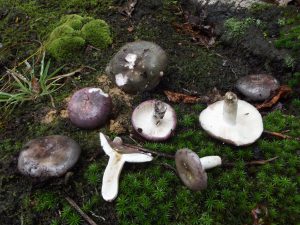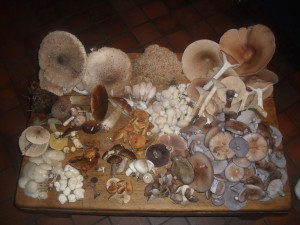Email: geoff@geoffdann.co.uk
13/08/2018
Just a quick update on the weather and fungi conditions.
 The last couple of days have seen another generous helping of rain in south-east England, and the first clear evidence that the fungi are back. And in fact the omens are positive, and right now I’d tentatively guess we’re in for a good autumn as far as fungi are concerned. This afternoon I visited a location I’ll be running some new events at this autumn. Details are available via the link at the top of this page, the area is called “Mill Wood”, and it is the site of a woodland pig farm that has been reclaimed by nature for the last four years, plus some adjacent land. We found plenty of Brittlegills (mainly Charcoal Burners), a Blusher, some boletes, a couple of very young Chicken of the Woods, a large flush of Common Puffballs just coming through and a lot of White-laced Shanks (all edible). There were also a few other, inedible bits a pieces. That’s not bad at all for August 13th after an extended spell of extremely hot and dry weather.
The last couple of days have seen another generous helping of rain in south-east England, and the first clear evidence that the fungi are back. And in fact the omens are positive, and right now I’d tentatively guess we’re in for a good autumn as far as fungi are concerned. This afternoon I visited a location I’ll be running some new events at this autumn. Details are available via the link at the top of this page, the area is called “Mill Wood”, and it is the site of a woodland pig farm that has been reclaimed by nature for the last four years, plus some adjacent land. We found plenty of Brittlegills (mainly Charcoal Burners), a Blusher, some boletes, a couple of very young Chicken of the Woods, a large flush of Common Puffballs just coming through and a lot of White-laced Shanks (all edible). There were also a few other, inedible bits a pieces. That’s not bad at all for August 13th after an extended spell of extremely hot and dry weather.

